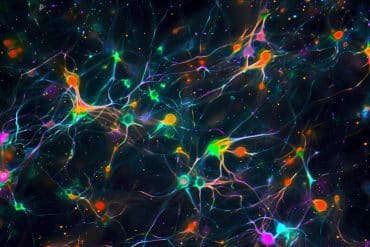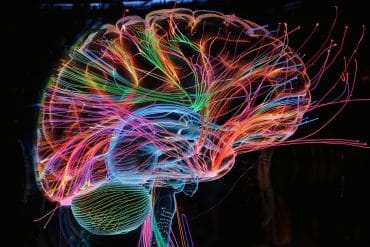Summary: A new study has identified a gene that appears to be associated with binge eating.
Source: Boston University Medical Center.
Researchers have identified a gene (CYFIP2) associated with binge eating.
This finding represents one of the first examples of a genome-wide significant genetic factor to be identified for binge eating in model organisms or humans. In addition, the researchers discovered a network of downregulated genes involved in myelination (the process of forming a sheath around a nerve fiber to allow nerve impulses to move quickly) that also was associated with binge eating.
These findings, which appear online in the journal Biological Psychiatry, could potentially lead to treatments targeted to normalize eating behaviors.
Eating disorders are among the most lethal of neuropsychiatric disorders. Compulsive binge eating affects millions of people suffering from eating disorders and obesity in the United States. It is characterized by episodes of eating large quantities of food, often very quickly and to the point of discomfort. Binge eaters often experience a loss of control during the binge as well as shame, distress or guilt afterwards.
Genome-wide association studies of eating disorders in humans have been limited in their power to detect significant associations between genotype and disease or disease traits such as binge eating.

Using gene mapping and gene validation, researchers from Boston University School of Medicine (BUSM) were able to identify cytoplasmic FMR1-interacting protein 2 (CYFIP2) as a major genetic risk factor for binge eating. In addition, they observed that decreased myelination could be a neuropathological consequence of binge eating. “Because we found changes in the brain as a consequence of binge eating that were predictive of decreased myelination, therapeutically promoting remyelination may represent a novel treatment avenue for promoting recovery from negative feeding behaviors in eating disorders,” explained corresponding author Camron Bryant, PhD, assistant professor of Pharmacology and Experimental Therapeutics & Psychiatry at BUSM.
Bryant and his colleagues believe these findings may lead to new therapeutic treatments which could ultimately save lives and restore healthy eating behaviors in conditions such as compulsive overeating, bulimia nervosa, anorexia nervosa and even substance use disorders.
Funding: Funding for this study was provided by R21DA038738 (C.D.B.), R03DA038287 (C.D.B.), R00DA029635 (C.D.B.), F31DA40324 (N.Y.), R01DA030425 (P.C.), T32GM008541 (L.R.G., N.Y., and A.B.), Burroughs Wellcome Fund Transformative Training Program in Addiction Science #1011479 (N.Y. and J.W.), and Boston University’s Undergraduate Research Opportunities Program (K.I.L. and K.P.L.).
Source: Gina DiGravio – Boston University Medical Center
Image Source: NeuroscienceNews.com image is in the public domain.
Original Research: Abstract for “Cytoplasmic FMR1-Interacting Protein 2 is a Major Genetic Factor Underlying Binge Eating” by Stacey L. Kirkpatrick, Lisa R. Goldberg, Neema Yazdani, R. Keith Babbs, Jiayi Wu, Eric R. Reed, David F. Jenkins, Amanda Bolgioni, Kelsey I. Landaverde, Kimberly P. Luttik, Karen S. Mitchell, Vivek Kumar, W. Evan Johnson, Megan K. Mulligan, Pietro Cottone, and Camron D. Bryant in Biological Psychiatry. Published online October 25 2016 doi:10.1016/j.biopsych.2016.10.021
[cbtabs][cbtab title=”MLA”]Boston University Medical Center “Genetic Risk Factor for Binge Eating Discovered.” NeuroscienceNews. NeuroscienceNews, 26 October 2016.
<https://neurosciencenews.com/binge-eating-genetics-5365/>.[/cbtab][cbtab title=”APA”]Boston University Medical Center (2016, October 26). Genetic Risk Factor for Binge Eating Discovered. NeuroscienceNew. Retrieved October 26, 2016 from https://neurosciencenews.com/binge-eating-genetics-5365/[/cbtab][cbtab title=”Chicago”]Boston University Medical Center “Genetic Risk Factor for Binge Eating Discovered.” https://neurosciencenews.com/binge-eating-genetics-5365/ (accessed October 26, 2016).[/cbtab][/cbtabs]
Abstract
Cytoplasmic FMR1-Interacting Protein 2 is a Major Genetic Factor Underlying Binge Eating
Background
Eating disorders are lethal and heritable; however, the underlying genetic factors are unknown. Binge eating is a highly heritable trait associated with eating disorders that is comorbid with mood and substance use disorders. Therefore, understanding its genetic basis will inform therapeutic development that could improve several comorbid neuropsychiatric conditions.
Methods
We assessed binge eating in closely related C57BL/6 mouse substrains and in an F2 cross to identify quantitative trait loci (QTL) associated with binge eating. We used gene targeting to validated candidate genetic factors. Finally, we used transcriptome analysis of the striatum via mRNA sequencing (RNA-seq) to identify the premorbid transcriptome and the binge-induced transcriptome to inform molecular mechanisms mediating binge eating susceptibility and establishment.
Results
C57BL/6NJ but not C57BL/6J mice showed rapid and robust escalation in palatable food consumption. We mapped a single genome-wide significant QTL on chromosome 11 (LOD=7.4) to a missense mutation in cytoplasmic FMR1-interacting protein 2 (Cyfip2). We validated Cyfip2 as a major genetic factor underlying binge eating in heterozygous knockout mice on a C57BL/6N background that showed reduced binge eating toward a wild-type C57BL/6J-like level. Transcriptome analysis of premorbid genetic risk identified the enrichment terms “morphine addiction” and “retrograde endocannabinoid signaling” whereas binge eating resulted in the downregulation of a gene set enriched for decreased myelination, oligodendrocyte differentiation, and expression.
Conclusions
We identified Cyfip2 as a major significant genetic factor underlying binge eating and provide a behavioral paradigm for future genome-wide association studies in populations with increased genetic complexity.
“Cytoplasmic FMR1-Interacting Protein 2 is a Major Genetic Factor Underlying Binge Eating” by Stacey L. Kirkpatrick, Lisa R. Goldberg, Neema Yazdani, R. Keith Babbs, Jiayi Wu, Eric R. Reed, David F. Jenkins, Amanda Bolgioni, Kelsey I. Landaverde, Kimberly P. Luttik, Karen S. Mitchell, Vivek Kumar, W. Evan Johnson, Megan K. Mulligan, Pietro Cottone, and Camron D. Bryant in Biological Psychiatry. Published online October 25 2016 doi:10.1016/j.biopsych.2016.10.021






